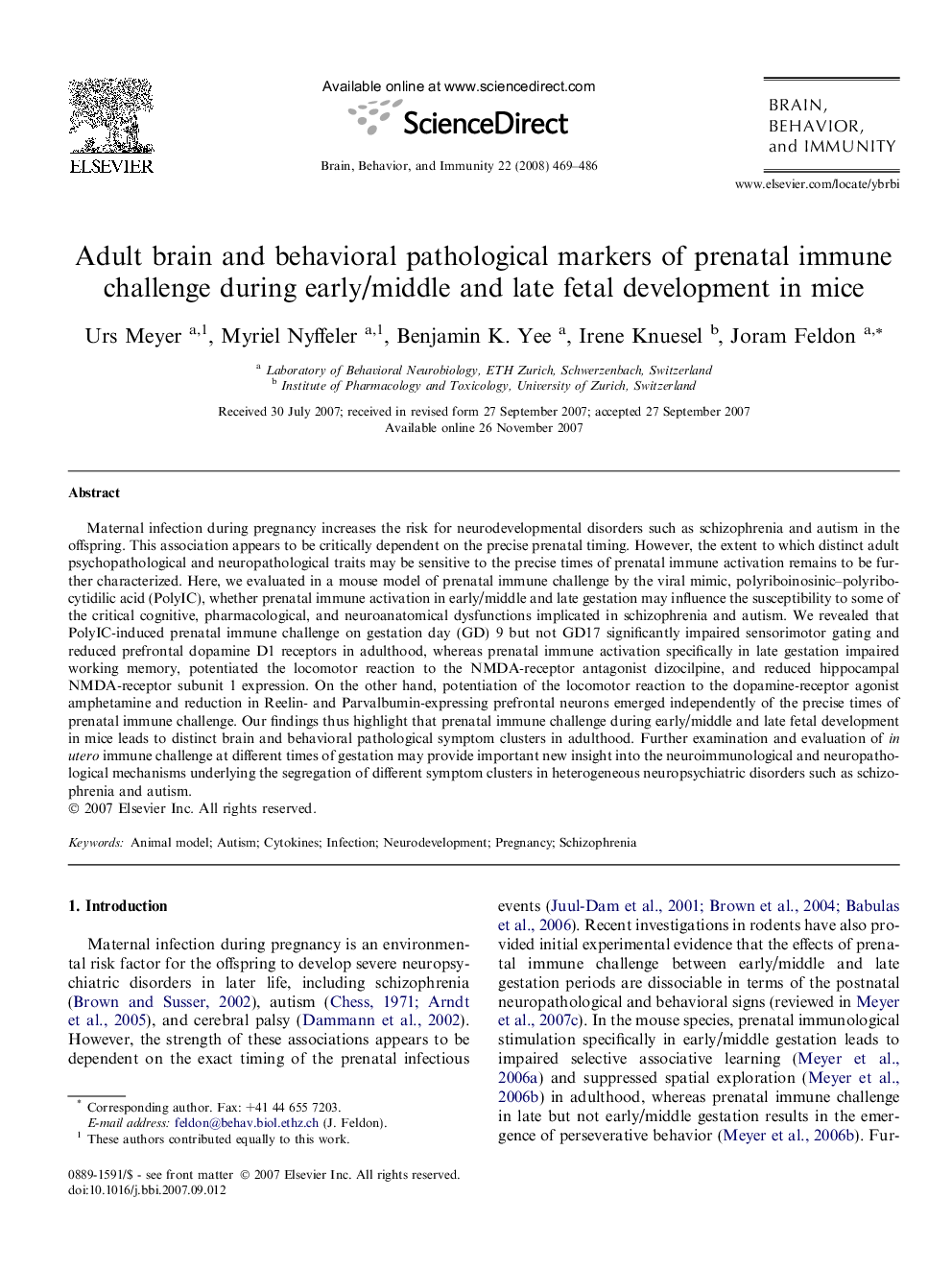| Article ID | Journal | Published Year | Pages | File Type |
|---|---|---|---|---|
| 923135 | Brain, Behavior, and Immunity | 2008 | 18 Pages |
Maternal infection during pregnancy increases the risk for neurodevelopmental disorders such as schizophrenia and autism in the offspring. This association appears to be critically dependent on the precise prenatal timing. However, the extent to which distinct adult psychopathological and neuropathological traits may be sensitive to the precise times of prenatal immune activation remains to be further characterized. Here, we evaluated in a mouse model of prenatal immune challenge by the viral mimic, polyriboinosinic–polyribocytidilic acid (PolyIC), whether prenatal immune activation in early/middle and late gestation may influence the susceptibility to some of the critical cognitive, pharmacological, and neuroanatomical dysfunctions implicated in schizophrenia and autism. We revealed that PolyIC-induced prenatal immune challenge on gestation day (GD) 9 but not GD17 significantly impaired sensorimotor gating and reduced prefrontal dopamine D1 receptors in adulthood, whereas prenatal immune activation specifically in late gestation impaired working memory, potentiated the locomotor reaction to the NMDA-receptor antagonist dizocilpine, and reduced hippocampal NMDA-receptor subunit 1 expression. On the other hand, potentiation of the locomotor reaction to the dopamine-receptor agonist amphetamine and reduction in Reelin- and Parvalbumin-expressing prefrontal neurons emerged independently of the precise times of prenatal immune challenge. Our findings thus highlight that prenatal immune challenge during early/middle and late fetal development in mice leads to distinct brain and behavioral pathological symptom clusters in adulthood. Further examination and evaluation of in utero immune challenge at different times of gestation may provide important new insight into the neuroimmunological and neuropathological mechanisms underlying the segregation of different symptom clusters in heterogeneous neuropsychiatric disorders such as schizophrenia and autism.
